
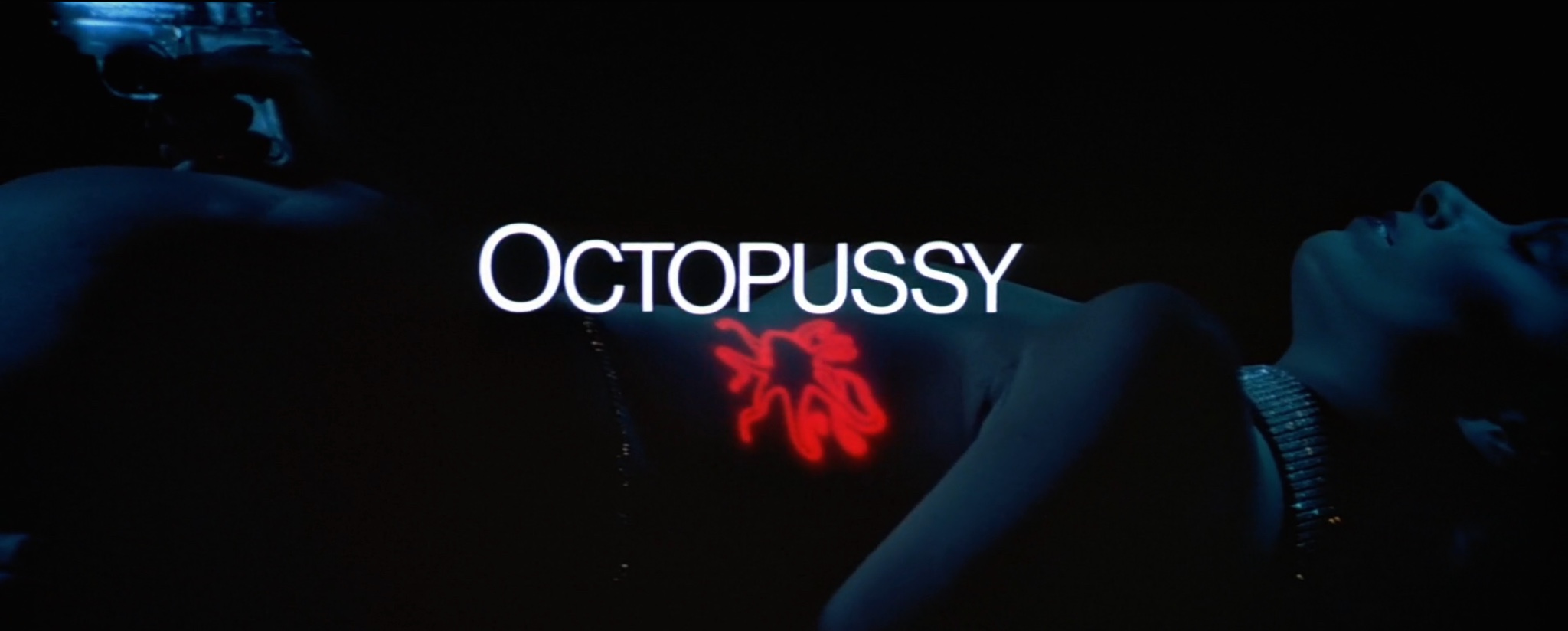
For Your Eyes Only had been a success internationally, and Broccoli and John Glen were vindicated in their approach to bring Bond back down to earth. Cubby Broccoli was awarded the Thalberg Award at the Oscars for lifelong contributions to movies.. it was a good year, and Bond movies were starting to find an audience on home video for the first time. But FYEO had done less well in the US.. attracting smaller audiences than rival franchises Indiana Jones and the second Superman film, not to mention The Godfather II. The next Bond, the 13th, was clearly going to be critical for the success of the franchise – not least because this time, Kevin McClory had finally found financial backers for his long gestating remake of Thunderball, and for the first time since Casino Royale in the 60’s, an EON Bond was going to go head to head with a rival Bond picture. All this at a time of upsurge in British pride – Thatcher had just had success in the Falklands, and Prince William had just been born.
This critical follow up was to be based on one of the few titles left by Fleming, Octopussy, one of his short stories, although almost none of that plot was used. Instead another of his short stories, The Property of A Lady, got cannibalised to provide elements of the plot, though most was written from scratch.
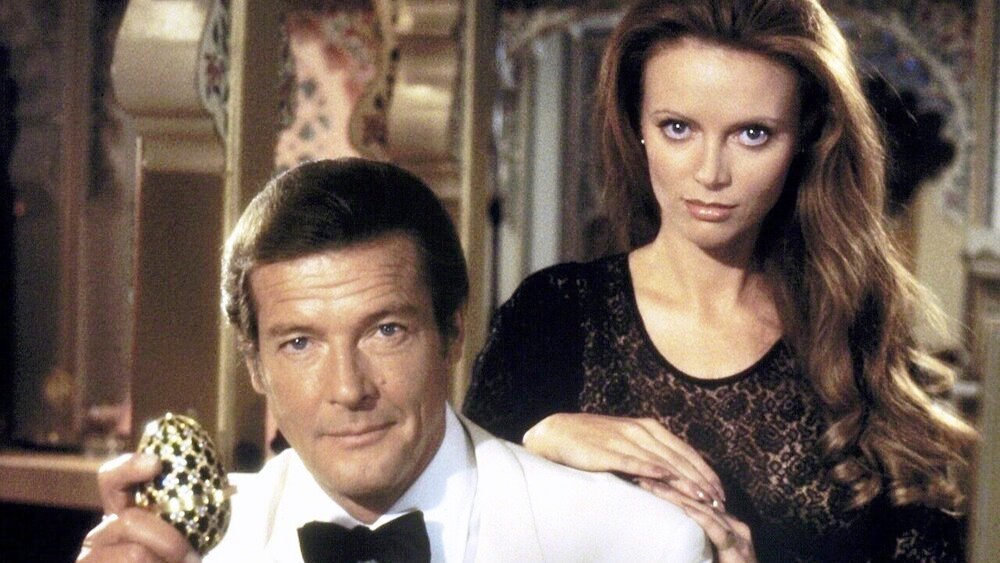
Since it had already been decided to set the story in India, the producers hired George MacDonald Frazer (Better known for his Flashman novels) to write a screenplay which was then reworked by Bond regulars Richard Maibaum and Michael Wilson to fit into the series. This was to become an odd mixture of Cold War paranoia and Rudyard Kiplingesque scenes. Roger Moore had made it know that For Your Eyes Only really was his last movie, so with script, locations and director in place, the question was, who would play Bond?
Timothy Dalton was considered, as was Michael Billington who had played a Russian in the opening scene of The Spy Who Loved Me, before they landed on (shock horror) an American – James Brolin. His screentest against Maud Adams, who was subsequently cast as Octopussy, was promising. Producers were nervous about an American Bond however, and at the 11th hour a deal was struck to get Moore on board again. Casting was rounded out with Steven Berkoff playing in typically flamboyant style as the villain.. err..ok, when I say flamboyant I really mean completely hammy and in my opinion as intrusive as the Bill Conti score was in the previous movie.
Interestingly the Bond sidekick was played by Vijay Amritraj, at the time a famous tennis player and later to achieve somewhat lesser fame as the first non-Caucasian Captain of a starship, in Star Trek IV.
There’s no question, that for whatever reason, the Moore-esque humour had returned, and Peter Lamont’s sets were starting to look more like Ken Adams signature pieces than the low key Bond developed on FYEO. Look out also for John Glen’s signature trademarks – the pigeon or dove bursting out moment, and people dying by falling from high places. Even John Barry was back on music duties, having settled his tax affairs with the UK taxman. ‘Octopussy’ outperformed ‘Never Say Never Again’ – by a small margin, but consistently in all markets. It was the last Bond movie along with NSNA to come directly from the Cold War. It had some worrying attempts at post modernism – the Barbara Woodhouse “Sit!” which must have puzzled American audiences, or the ill-conceived Tarzan gag for example.. and the attempt at a ‘new’ Moneypenny misses the mark and we only ever see her in this movie. However, there are some interesting weapons, Q gets a bigger role, and India does make for an interesting setting.. even the theme song with lyrics by Tim Rice was pretty good.
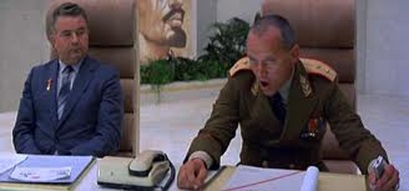
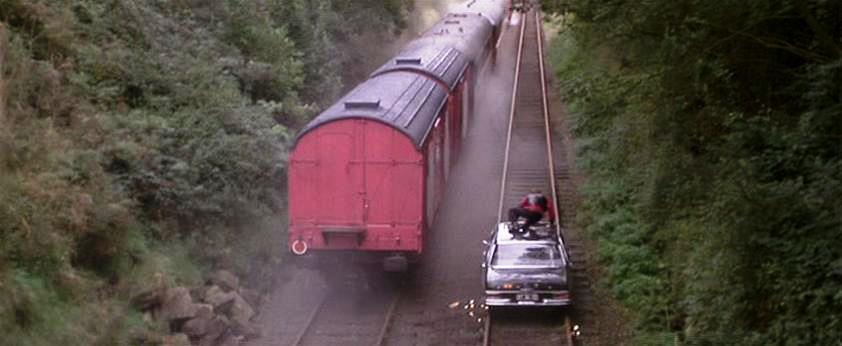
The production did have difficulties.. the second unit were filming the train sequence, with stuntman Martin Grace doubling for Bond. After 4 weeks of work, they had a helicopter for two days to do the overhead shots. The train rumbled on, Martin Grace hanging from the side.. but when the train started on new unchecked track, no-one called “Cut.”. A concrete stanchion at the side of the track smashed into the stuntman, breaking arm, leg and rib and cracking the hip, ripping most of the flesh off the front of his thigh. He would spend 6 months in hospital recuperating.
So was number 13 unlucky for Bond? Did spectacular locations and glamorous ladies help cement the Bond movie tradition, and the scent of competition up the game of the filmmakers? Or is it, in the words of one critic “part parody and part travesty”, or “Bond without Bite”? Watch it again and make up your own mind..
Trivia
Permission to shoot in the region of Udaipur had to be sought and granted from the reigning Royal Maharana Bagwat Singh. He would frequently entertain the A-list of the cast and crew at dinners during production where they would be served specially made Rose Wine.
Many production and story ideas and elements not used in the movie Moonraker ended up being utilized for this film. These included the knife throwing twins, the casting of Louis Jourdan as the villain and the Acrostar Bede jet sequence.
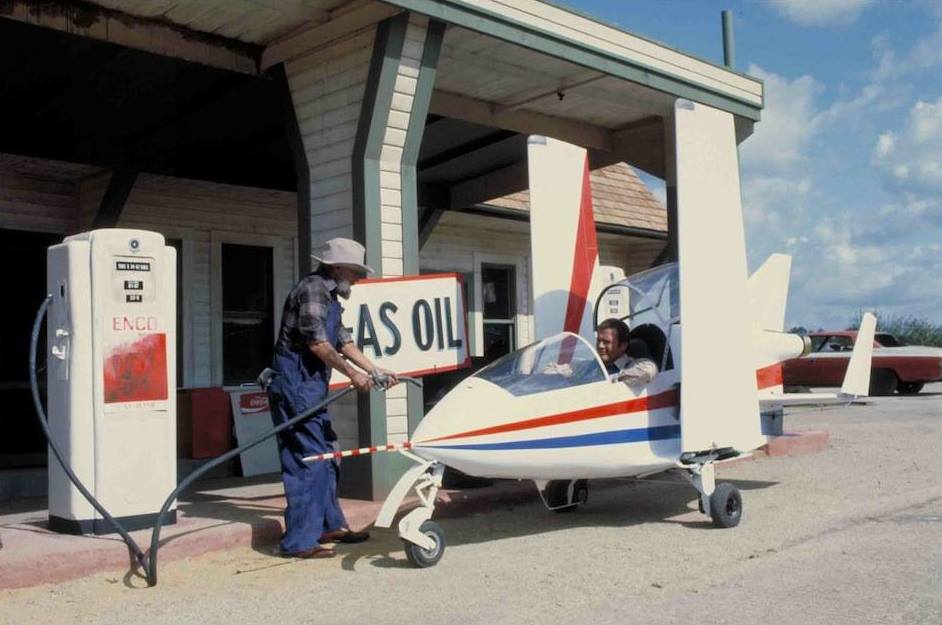
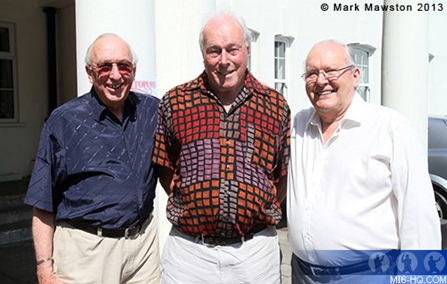
Director John Glen (centre) and production designer Peter Lamont, at the 30th Anniversary celebration of this movie.
Last Bond film to reveal the name of the next Bond film during the end credits, namely "From A View to a Kill", (which later dropped the "from" out of the title).
This is the only James Bond movie in the EON Productions official spy genre series that features the famous East Berlin - West Berlin Cold War crossing point Checkpoint Charlie.
The film's "All Time High" main title song sung by Rita Coolidge is the first Bond theme song not to feature the title of the movie anywhere in its lyrics. Casino Royale's "You Know My Name" by Chris Cornell is the second whilst the Jack White and Alicia Keys' song "Another Way To Die" from Quantum of Solace is the third.
First James Bond movie to be released with the MGM Lion logo at the beginning. MGM merged with United Artists in 1982, the year before the release of Octopussy and this is the first Bond movie distributed by the new company, MGM/UA Distribution Co.
It was not a planned part of the Indian cabbie chase sequence when a cyclist rode between the two battling vehicles, providing added suspense. The director claims the cyclist was quite oblivious to what was going on.
In the train-flying car stunt, when the car landed, one of the stunt men dressed as a fisherman only just made it out of the row boat in the lake where the car was landing. This footage can be seen in the finished film.
Robert Brown appears as "M" for the first time, replacing Bernard Lee who died between Moonraker (Lee's final appearance as M) and For Your Eyes Only which left the M character out entirely.
Kristina Wayborn broke several toes in her foot while shooting the attack on the Monsoon Palace by Octopussy's Circus. A bazooka she was to kick out of a thug's arms was supposed to be replaced with a plastic model, but the stuntman was holding a metal one by accident.
The exterior of the Monsoon Palace was used for shooting. However, the interior of the palace is in reality not inhabited. The interior shots were all done in a studio.
Although supposed to be Cuba, Northholt Airport in London was the setting for the pre-title sequence.
Feldstadt is a fictitious German city created for this film.
© Stephen's Movie Guide
Inverurie Website Design